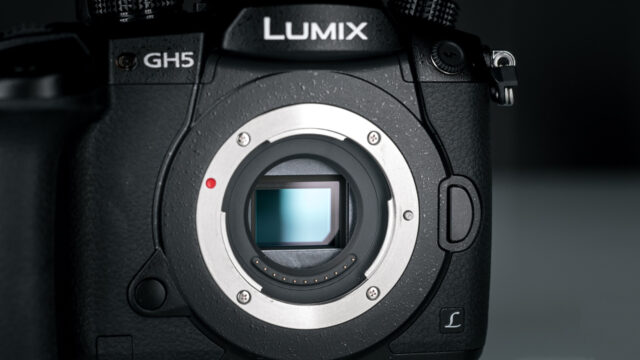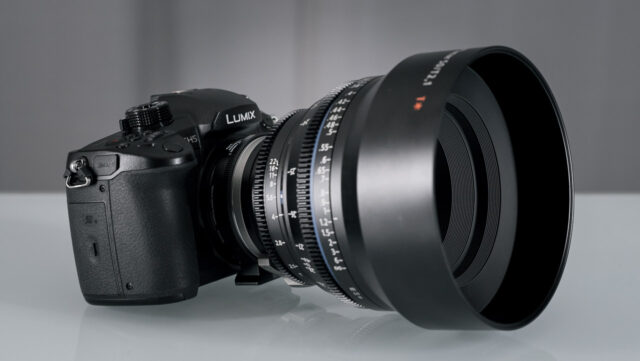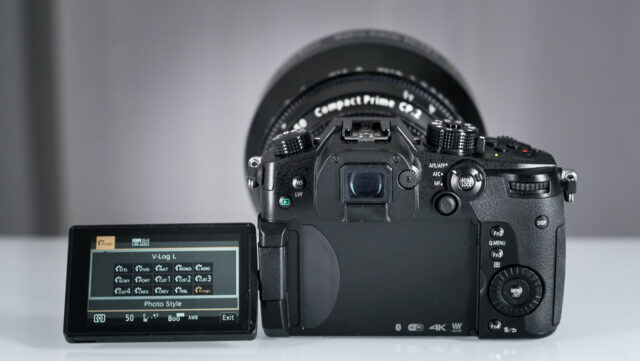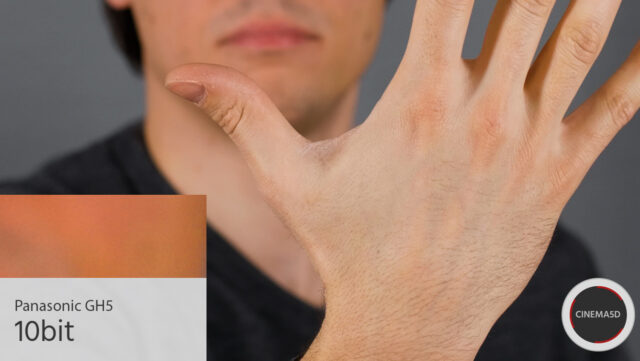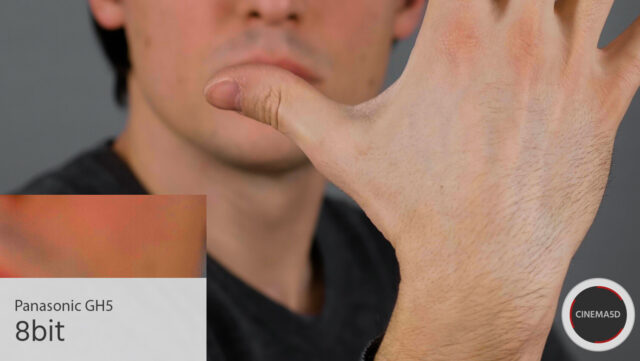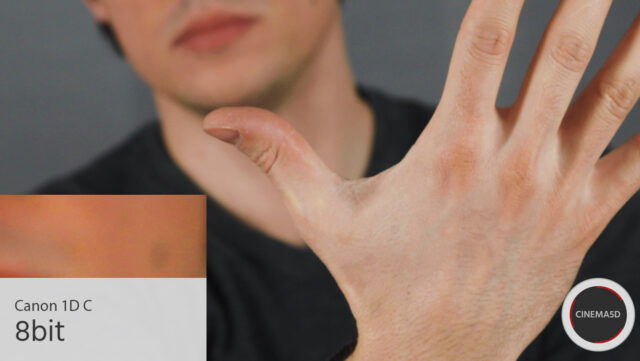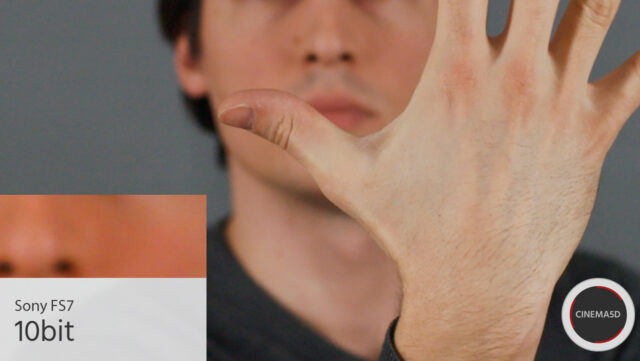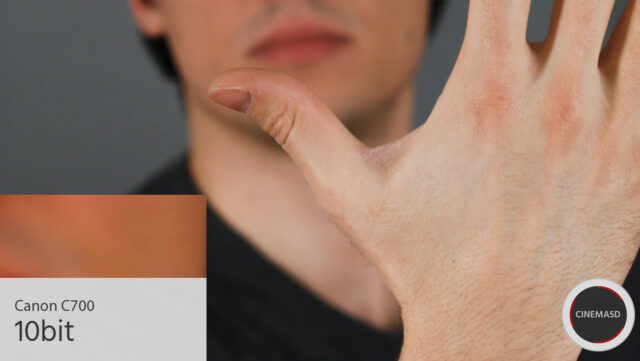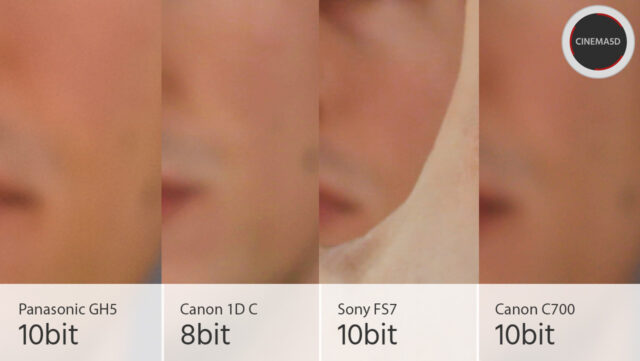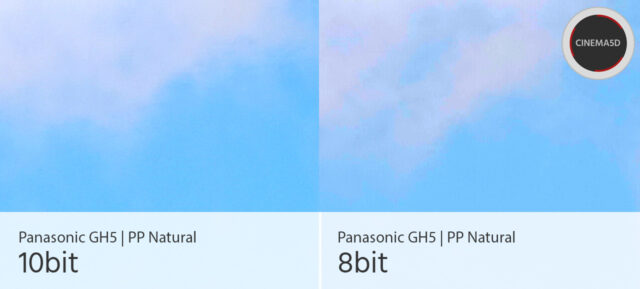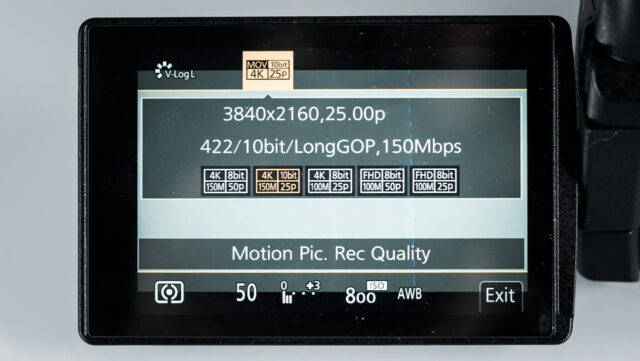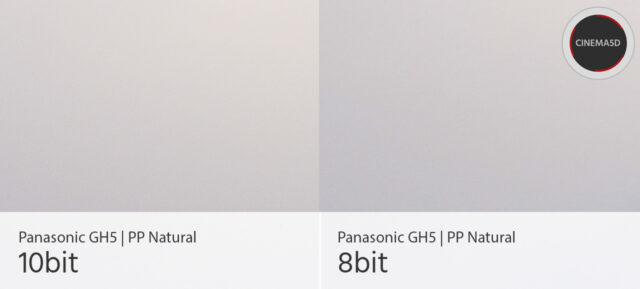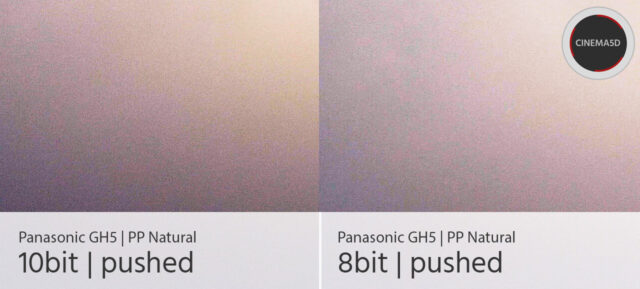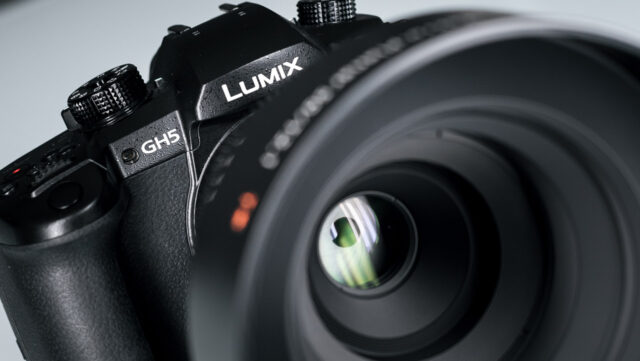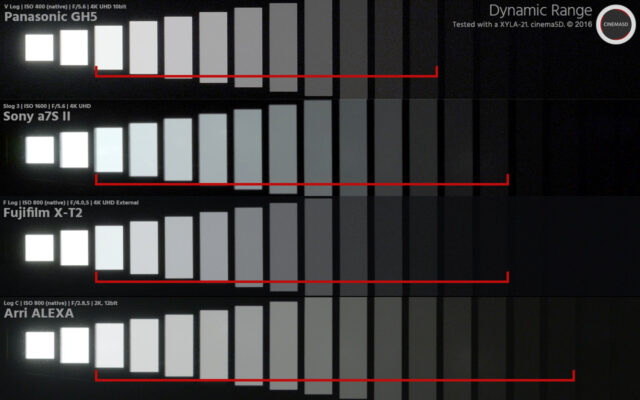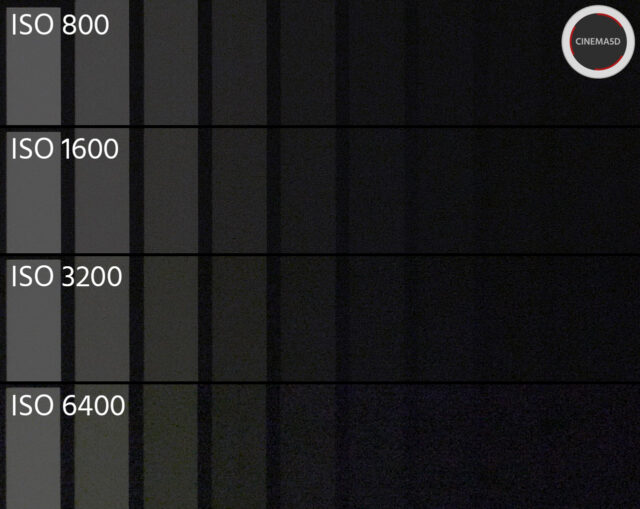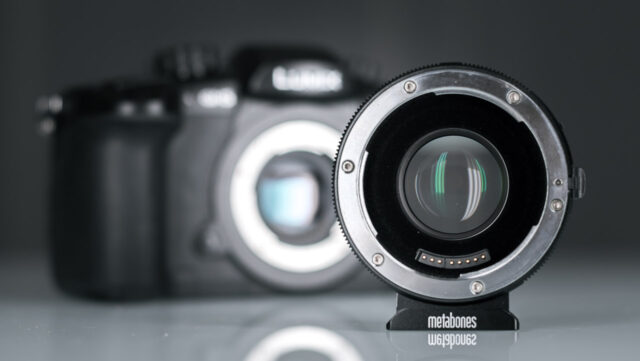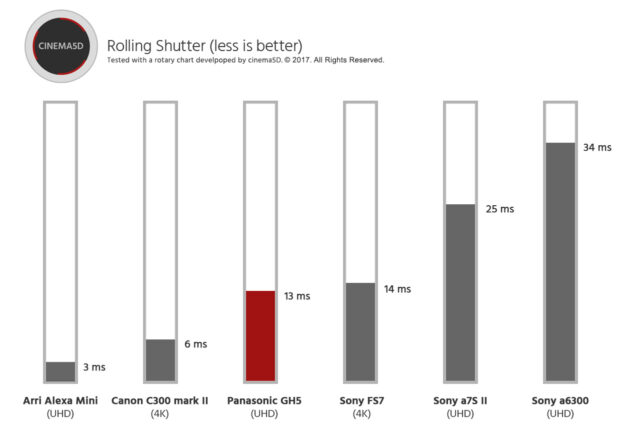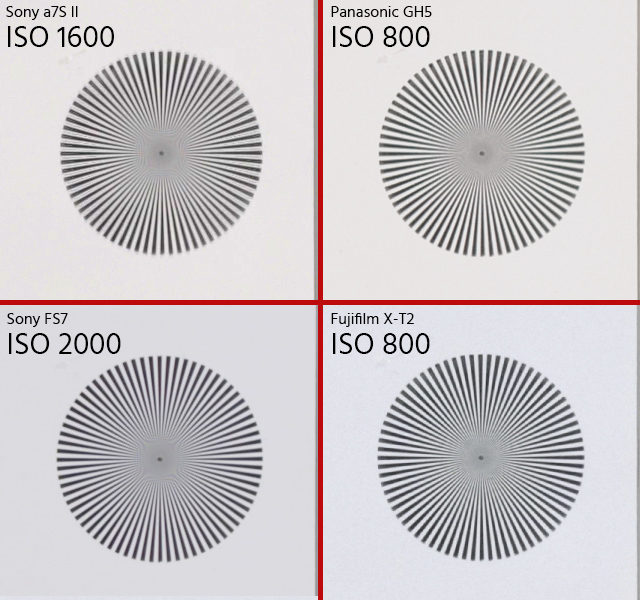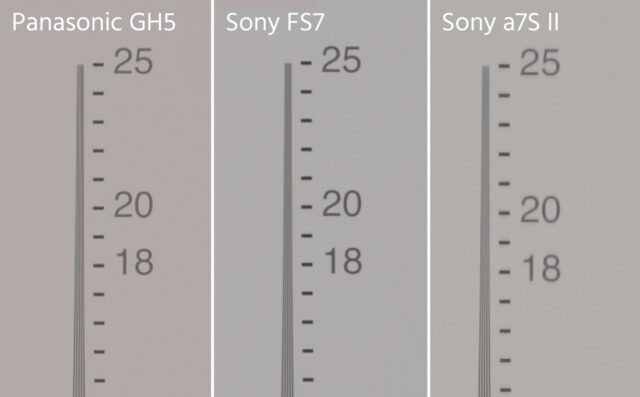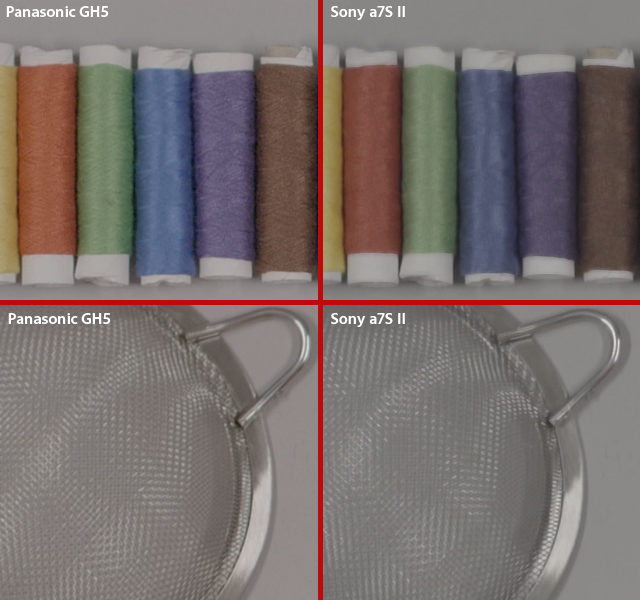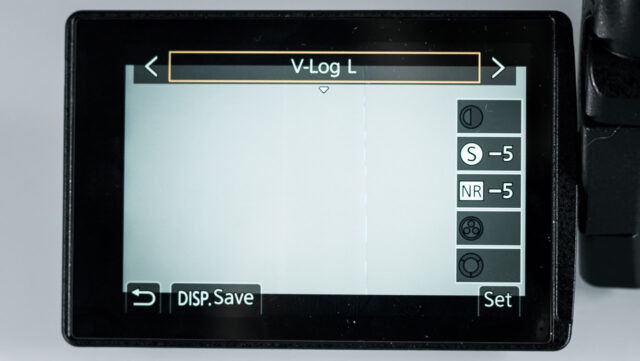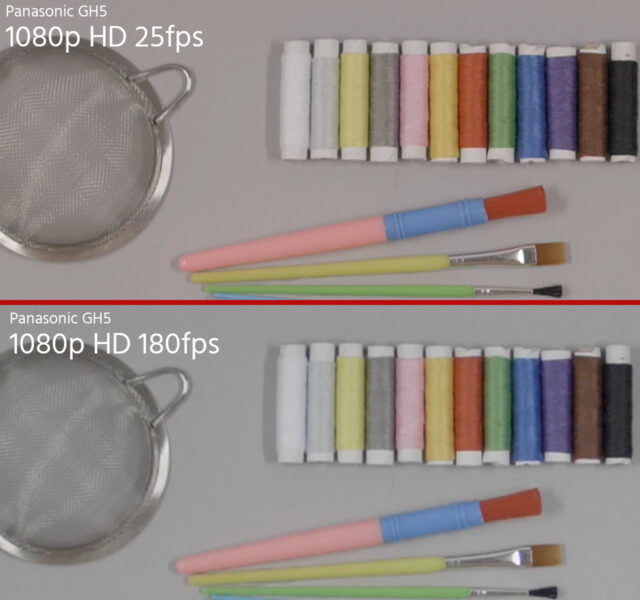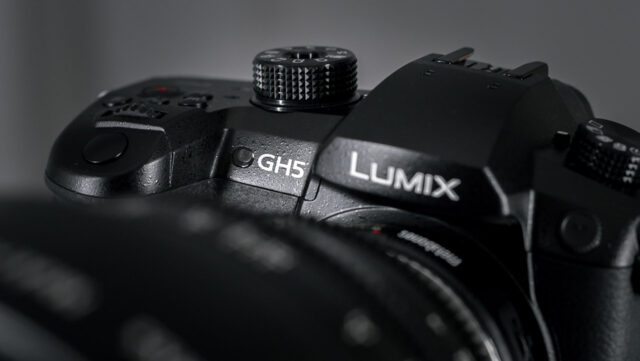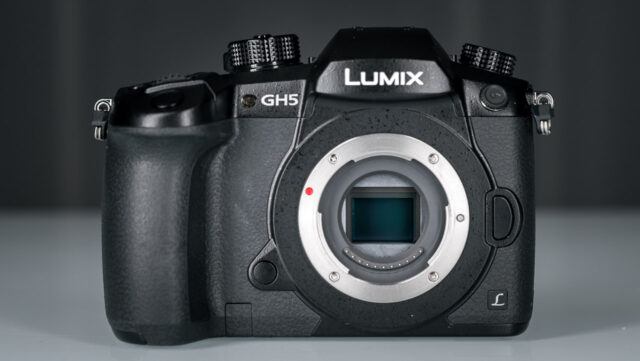![How Good is the Panasonic GH5? Lab Review + Free GH5 LUT [UPDATED]](https://www.cined.com/content/uploads/2017/03/GH5_featured_new_lab-1300x750.jpg)
[UPDATED:] This article has been updated. Read the update notes and clarification HERE.
The Panasonic GH5 is one of the most highly-anticipated compact cinema cameras of the year. It is the first of its kind to finally break the barrier towards a compact form-factor 10-bit 4K acquisition in the realm of (somewhat) large sensor cameras. Here is our lab analysis, where we will evaluate all the pros and cons of the new GH5 sensor, with a focus on the new 4K 10-bit mode.
Panasonic GH5 Review
After a short delay, here is our long awaited Panasonic GH5 lab review. Also check out the preliminary hands-on that Graham did in January.
Even though we try very hard to give you an objective view of the product reviewed, please note that all information and conclusions written in this article reflect the opinion of the author. We recommend that you always try and test any product for yourself and find your own conclusions based on your technical requirements before you use them.
In this Panasonic GH5 review, I will run the usual tests I do here at cinema5D, and invite you to check several important sensor attributes like dynamic range, sharpness and rolling shutter performance. I will also try to examine the low-light performance and take a particular look at 10-bit.
We test all cameras with the same Zeiss 50mm Cp2 macro lens (more on how we test HERE). In the case of the Panasonic GH5, the lens was attached via EF-mount with the Metabones Speedbooster Ultra adapter, which in my experience gives me excellent optical performance. For the dynamic range test I use a DSC labs XYLA-21 transmissive test chart, and to measure sharpness I used a combination of a subjective chart and a huge 8K Imatest ISO chart. Let’s get started.
The Panasonic GH5 Introduces 10-bit 4K
That the Panasonic GH5 introduces 10-bit color depth is this camera’s most interesting feature, and one that had many filmmakers (including myself) excited for the last couple of months. But looking at the camera’s specs, there are other attributes to like:
- Slightly larger sensor area than the GH4
- 5-axis internal image stabilisation
- Internal 10-bit 4:2:2 in 4K (up 30fps)
- Internal 8-bit 4:2:0 in 4K (up 60fps)
- Up 180fps in 1080p
- Dual SD card slots
- No recording time limit
- V-Log Gamma (paid upgrade $100)
- Affordable price
A firmware update later this year will bring 6K photo mode, anamorphic recording as well as internal DCI 4K 10-bit with a 400mbit all-I codec. Currently, we’re stuck with 150mbit, which is fine too and should give us great results.
But let’s go into 10-bit color depth right away. I was really eager to test it and expected to see silky smooth skin gradations and footage with rich color information from Vlog recordings. After all, many of us have been shooting 8-bit color on most of their productions and the step up to 10-bit should make a huge difference, going from millions to 1.1 billion colors of file information. Furthermore, many were frustrated with Vlog on the GH4, so let’s try to see how the performance was improved on the new model.
[UPDATED:] Panasonic GH5 10-bit & Vlog
I was impressed when I first saw GH5 10-bit footage. With the right coloring or LUT, the results looked more organic and filmic than most of what I had seen in the area of small form-factor cinema cameras that shoot 8-bit. But after trying Vlog and tweaking the colors a bit more, I also found that skin tones were not as realistic as on larger cinema cameras like the Panasonic Varicams or cameras like the Canon C300. That said, I found that the 10-bit images from the GH5 still gave me much more control over my colors than other small form factor 8-bit cameras available today.
To get a better idea of how good the 10-bit quality of the Panasonic GH5 really is, I did a subjective side-by-side comparison with a few other cameras in a post production workflow suitable to the camera’s price tag.
Workflow
At the time of my review, 10-bit files from the Panasonic GH5 were incompatible with Adobe Premiere Pro, After Effects and Blackmagic Design DaVinci Resolve, which is the software that I use on a Mac Pro, 2013 for video editing. The only way to get footage into the editing software was to first transcode it in a different app. I used Apple’s Final Cut Pro X.
In an effort to make my tests as “real world” as possible, I chose the familiar Apple ProRes HQ codec, not only because it is widely used by professionals in 10-bit environments and external high quality recordings, but also because it was used as the recording format of the Canon C700 that I compared the Panasonic GH5 to and, because it is described by Apple as a codec that preserves “… visual quality at the same high level as Apple ProRes 4444 but for 4:2:2 image sources.” and “… supports full-width, 4:2:2 video sources at 10-bit pixel depths, while remaining visually lossless through many generations of decoding and reencoding.”.
Adobe Premiere Pro & Apple ProRes HQ Import Error
The consequence of using this codec however led to incorrect results when evaluating the Panasonic GH5’s 10-bit Vlog performance as it affected my files in a way that introduced an unexpectedly large quality loss within Adobe Premiere Pro. It seems like the quality issues previously found in my original test were caused by an error of the Adobe Premiere Pro software in connection with the Apple ProRes HQ codec. While the reasons for the error have not been clarified, anybody who intends to use Adobe Premiere Pro in connection with 10-bit files in Vlog recorded on the Panasonic GH5, should consider the conversion steps carefully. Using the Apple ProRes HQ codec on a daily basis, I was surprised that the conversion affected the Vlog files from the Panasonic GH5 in my initial test so severely. After reevaluation, it has become clear that the Apple ProRes HQ codec is more than capable to hold the 10-bit information Vlog requires and the error in connection with Adobe Premiere Pro needs to be reported and investigated. Furthermore the Panasonic GH5 in Vlog mode exhibits a magenta / green color shift in some parts of the image, that was further exaggerated by said error.
Panasonic told us they have been studying the color shift symptom in V-Log, including the compatibility with each of the color grading apps. And that they will make an announcement on their web site when they release an updated firmware to improve performance.
The exaggerated color shift was also visible during recording on the camera itself, in preview mode in Final Cut X, as was also present on native footage from the Panasonic GH4. However in 10 bit mode on the GH5, the color shift is much less severe and can be controlled much better than on the GH4.
Comparing the cameras
We had a Sony FS7, Canon C700 and Canon 1DC available at cinema5D HQ. Two of those cameras shoot 10-bit internal, and one of them is in fact a seriously expensive and high end camera (C700), so that should give me some perspective.
I recorded my hand and face to see how the sensor would interpret skin tones. The color depth was set to 10bit, I shot in V-log and did a rough grade to match the other cameras. I tried to only work on curves, but had to reduce the overly pinkish red tones in order to keep the skin tones natural.
The window on the left is a 150% crop of my cheek with a 25% boost in saturation, so you can see the color separations more clearly. The image from the Panasonic GH5, when treated correctly seemed to have a good amount of color depth to work with for me, even though the colors were not ideal right out of the box.
Here is the same shot in 8-bit mode on the Panasonic GH5. Color gradations seem much poorer and remind me of images I’ve seen shot with the Panasonic GH4.
It is true that a flat gamma like V-log greatly diminishes color information in exchange for extended dynamic range and softer highlights and shadows. Clearly the 10-bit codec is the one to choose when shooting Vlog on the Panasonic GH5.
Here’s the Canon 1D C, shot in C Log Gamma. I can see a similar kind of reduced color information there as on the GH5’s 8-bit recordings that I did. The resulting images have large areas with a single color. However the overall skin color seems more harmonious and natural than on the GH5. Anyway, the 1D C is an outdated 8-bit camera for many, so let’s move on to other 10-bit cameras.
Here is the Sony FS7 with an Slog-2, 10bit recording in XAVC-I and there is certainly smoother color, almost comparable to that of the GH5’s 10-bit files, with skin tones that I find just “ok”. I could still make out some color artifacts in the skin, and bit depth seems to be a bit less than I had expected. Color depth of the GH5 seemed a bit nicer to me.
Here is where it gets interesting. The Canon C700 is a camera that comes in a huge form factor and with a high price tag. It is a serious moviemaking camera and the latest flagship Canon C model that also shoots 10-bit ProRes HQ in 4K DCI, so that’s what I chose for this shot. To me, this one gave me the best skin tones, neutral and harmonious colors and even though recorded in ProRes HQ, only minimal color artifacts and a color depth similar to that of the GH5.
10-bit Test Conclusion
The bit depth on the GH5 when shooting in Vlog at 10-bit seemed very good to me. While I didn’t like the skin tones so much and found a slight color shift (white surface shades sometimes exhibited a magenta / green tone for me), it still gave me a lot of color information that I could work with.
Here is how the 8-bit codec compared to the 10-bit codec of the Panasonic GH5 looked like in my tests. I graded this with the official Panasonic Vlog to rec709 LUT and increased contrast:
Many people had hopes that the GH5 would solve many of the problems everyone had had with Vlog on the 8-bit GH4. To me it seems like those problems were addressed with the new 10bit 422 recording option. It looks like the 8 bit codec still suffers from a similar color shift as seen on the GH4.
Panasonic told us they have been studying the color shift symptom in V-Log, including the compatibility with each of the color grading apps. And that they will make an announcement on their web site when they release an updated firmware to improve performance.
8-bit / 10-bit Quality in PP “Neutral”
Looking at a different picture profiles I found that the color gradations looked nice even in 8-bit mode, and nicer than on most other 8-bit cinema cameras I’ve seen before.
As you can see in the shot above I used PP “Natural”. The results were pleasing, both in 10-bit as well as in 8-bit mode, when converted using a high quality codec like Apple ProRes 4444. Even when I pushed the image’s contrast I saw that there was a lot of room for grading before the image finally fell apart:
The difference between the 10-bit recording and the 8-bit recording in a picture profile other than Vlog seemed minimal. When I pushed the contrast to the extreme (image above) I could spot where the colors break apart, but they did so very similarly on both recordings. 8-bit mode looked good to me and if you shoot in any codec other than 10 bit, I would actually recommend to avoid Vlog for now. In 10bit however, Vlog is certainly recommended.
Dynamic Range
Now let’s focus on another important camera attribute – dynamic range. A good dynamic range rating allows us to capture a larger range of shadows and highlights in high-contrast scenes – an important property when it comes to evaluating a camera intended for filmic use.
Our software was very strict with the GH5. We always take noise into account, because in all honesty, a very noisy image can only be recovered up to a limited degree as image information is quickly lost. With our usual SNR threshold of 1/0.5, our software measured a rough 10 stops of usable dynamic range on the Panasonic GH5. This is a slightly sub-normal rating. Both the Sony a7S II and the Fujifilm X-T2 have a higher rating. Here’s a screenshot of the dynamic range of a few popular cameras:
We can see that the sensor’s total dynamic range is higher than those 10 usable stops, but in a real world scenario I think the noisy shadows will have to be cut away in grading. When used correctly, this camera can still produce admirable results. On a subjective scale – and if you don’t mind some noise in your images – I think this camera can give you 11 usable stops when you’re careful. You should just try to avoid underexposure on the Panasonic GH5.
[Update:] Many people suggested that they would be able to use noise reduction in order to get back more image information. While I personally find this unrealistic, it might be interesting for those people to know, that the total patch range detected by the software (regardless of considerable noise) was about 18 stops, the same as on the Sony a7S II, while it is 20 on the Arri Alexa. I hope this information is helpful for those who prefer to draw their own conclusions in this segment.
Noise and Low Light
In terms of noise and low light, I found that the camera actually doesn’t perform as bad as many feared (the GH4 had rather limited lowlight capabilities). In my tests the camera actually seemed to produce those same 10 stops of dynamic range at both ISO 400 and ISO 800. Quality only slightly degenerated at ISO 1600, and was at its breaking point at ISO 3200. At ISO 6400 the image clearly has much more noise and the color in the dark areas shifts towards pink and green. I think I would only shoot beyond ISO 3200 with caution.
In this image you can see a 100% crop of dynamic range steps 6 to 14:
On top of that, the MFT sized sensor and MFT mount also allows us to use the Metabones Speedbooster Ultra, which gives us an extra stop of exposure range and nice super35 shallow depth of field. So even though the out-of-thebox lowlight performance is only average, the Speedbooster can help us out a bit and for me, improves the overall look as well.
Rolling Shutter
The Sony a7S II suffered from strong rolling shutter problems, a phenomenon also referred to as “jello”. The rolling shutter phenomenon that we see on most CMOS sensor video cameras is also present on the Panasonic GH5, but is much less severe in comparison to many other cameras.
In my experience, after having tested the rolling shutter of over 50 different cameras, smaller sensors usually give us better rolling shutter ratings and the Panasonic with its MFT sensor seems to follow that pattern as well.
I used a rotating chart and measured the horizontal distortion of a vertical line to evaluate the total delay of sensor line readout.
Image Quality
Image Detail is the aspect where the Panasonic GH5 performs very well. To me the overall image looked organic with very nice detail, comparable to cameras like the Fujifilm X-T2 or FS7.
In terms of aliasing, the Panasonic GH5 also seemed to perform very well. In comparison to the FS7 though, I thought it was a bit weaker. “Horizontal resolving power” could be observed on this crop of our 8K test chart where lines couldn’t be separated as nicely as on the FS7.
The Sony a7S II has a problem with contrast areas. This is where the camera’s image gets soft and loses detail for unexplained reasons. The Panasonic GH5, in comparison, seemed to resolve all aspects of image detail quite nicely and seemed to outperformed the a7s II in that regard. I think this becomes very clear in the shot above. The slight grain (noise) on the Panasonic GH5 looked nice and filmic to me.
When using Vlog, I found it was important to set Sharpness (S) and Noise Reduction (NR) to -5. This gave me the best quality on the Panasonic GH5. Otherwise the image would look oversharpened to me and noise reduction didn’t control noise in any significant way for me when set to 0.
180fps Slow Motion
It is nice that the Panasonic GH5 gives us the option to shoot 180fps in HD resolution in such a small form factor. However, as on most other cameras this feature seems much better on paper than in reality, because the true resolution and quality seemed to be much less than 1080p in my tests.
As you can see the quality in HD resolution was very nice in my tests, whereas in slow motion mode, at 180fps, the image had visibly lower resolution and leaned more towards an actual 720p. Also I found the image exhibited the magenta / green color shift when used with Vlog Gamma, so I would only use slow motion with one of the other picture profiles.
Conclusion
This has become a very long winded article and countless hours we spent checking, testing and retesting, but some of the issues I found required some investigation and explanation and I hope you found these findings useful. In conclusion I think it is no doubt that the Panasonic GH5 is a very tempting offer when you look for an affordable, compact cinema camera that can potentially produce some great looking footage. There is a 10-bit option, 4K has nice details and 180fps slow motion is also there. In practice I found that some of those features are a bit less convincing than others, but overall the GH5 is a camera that is an intriguing allrounder that many will choose.
Log gamma has become the goto option for filmmakers who want high quality cinematic results and avoid the “digital look” that some of those cameras can produce. Also it offers the most flexibility in grading and opens up a world of possibilities in terms of LUTs and camera matching. Fortunately in my tests it eventually turned out that Vlog seems very capable with the GH5’s 10-bit mode. Even though I was not fond of the skin tones and the color shift, it seemed like the bit depth of the camera can actually match that of other and more expensive 10-bit cameras out there and gives you a lot of room in grading. This is great news for any filmmaker on a budget, because this camera has a lot in store.
If you are happy with the colors of the GH5’s Vlog, then I think the GH5 is currently one of the most convincing offers as an affordable cinema camera. Even though most of its sensor performance (detail, dynamic range, lowlight, 180fps) was only average to me, there are several aspects to enjoy too: The internal image stabilization was a pleasure to use for handheld applications, it gave me a very cinematic handheld look, the peaking is very useful and special features like the histogram and anamorphic recording options make this a more cinema capable camera than most other small handheld devices before. The introduction of 10-bit in this form factor is certainly a game changer and I hope we’ll see more cameras like these pop up in the near future. Until then, the GH5 is definitely on our top recommendations list.
All in all, if you had your money set on 10-bit, the Panasonic GH5 certainly seems like a convincing option, doing away with most of what people didn’t like about the GH4 and presenting a great compromise between Blackmagic’s and Sony’s offerings at a very competitive price.
Pro’s
- Good 10-bit 4:2:2 color depth in comparison to other 10-bit cameras
- MFT sensor works very well with Metabones Speedbooster Ultra for nice shallow depth of field.
- 5-axis internal image stabilisation
- Advanced video shooting functions like peaking, histogram or anamorphic mode
- Very nice quality 8-bit mode! Up to 60fps in 4K
- Good image detail
- Up to 180fps (Quality is not up to 1080p standards though)
- Good rolling shutter perfomance
- Dual SD card slots
- No recording time limit
- Affordable price
Con’s
- reddish Skin tones and sometimes magenta / green color shift, especially in 8 bit.
- Dynamic range is limited
- Lowlight is average
- 180fps mode has less quality than actual 1080p
- MFT mount has limimtations (Some Canon lenses did not work with the Metabones Speedbooster)
- MFT sensor is smaller than industry standard super35 (But gives you a great price and can be improved with the Metabones Speedbooster Adapter)
cinema5D instaLUT B1010 applied to Panasonic GH5 10bit
Panasonic GH5 LUT – cinema5D instaLUT FREE
This LUT is made for VLOG ON THE PANASONIC GH5 only! Vlog is a paid upgrade on this camera.
This LUT is ideal for people who don’t want to tamper around with colors too much or who want to get a nice and filmic basic look in post. This LUT imitates our instaLUT B1010 that we first used on the Arri ALEXA and DJI Inspire 2 here.
Download:
[ulp id=”URZ1kV2trvwr16Wo”]
To get our Panasonic GH5 LUT we ask only that you subscribe to our newsletter and in turn you will get the download link sent to your e-mail. This is a double opt-in and will not work with fake e-mails.
Your e-mail address stays with us. No spam or third parties and you can of course unsubscribe if you don’t like the weekly newsletter whenever you receive one. We hope you will enjoy our future content and stay on board.
Here are a few shots where you can see the LUT applied to Panasonic GH5 footage. These shots have the look applied with no other modifications.
